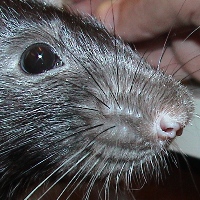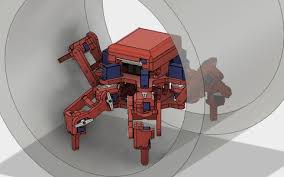Over the last 30 months the Whiskerbot project has been developing models of how the rat uses its whiskers, how the information is interpreted at the follicle, and how the signals from the follicle are processed in the rat’s brainstem.
Using a 250frames/s camera the team has built up a model of the kind of patterns rats generate when they ‘whisk’ their whiskers back and forth, which they do about ten times a second. The pattern varies according to the environment.
“There are whiskers on both sides of the head and most of the time they’re moving together, but the rat can change the amplitude of the whisking on each side,” said Dr Tony Prescott, from the Adaptive Behaviour Research Group at the University of Sheffield.
 |
| R4513. But what happened to the other 4,512 rats? |
“At a corner the whiskers on the left side might be very close to the wall, but those on the right might not be touching anything, so those will whisk much harder to try to make contact with the other side of the corner.”
To build the robot version, scientists in the Intelligent Autonomous Systems Lab at the University of the West of England replicated the whisker using a laminate, artificial muscle material called BioWire.
The whisking motion is achieved via a solenoid actuator, and strain gauges at the base of the whisker detect the movement in the x and y planes and convert it into a current pulse.
That signal is then fed into a model hair follicle, where the signal is converted into spike trains and passed on for further processing according to well-studied models of the brainstem’s neuronal network.
“We have a model of what we think is going on in terms the mechanical and electrical transduction inside the rat hair follicle, based on quite a lot of biology,” said Prescott. “The picture we’re getting is that the rat tries to maximise the amount of contact between the whisker tips and the surfaces.”
Tactile sensing has been relatively poorly studied, and Whiskerbot could lead to robots with combined vision/tactile sensor system for operation in harsh, confined environments.
 Electronics Weekly
Electronics Weekly


